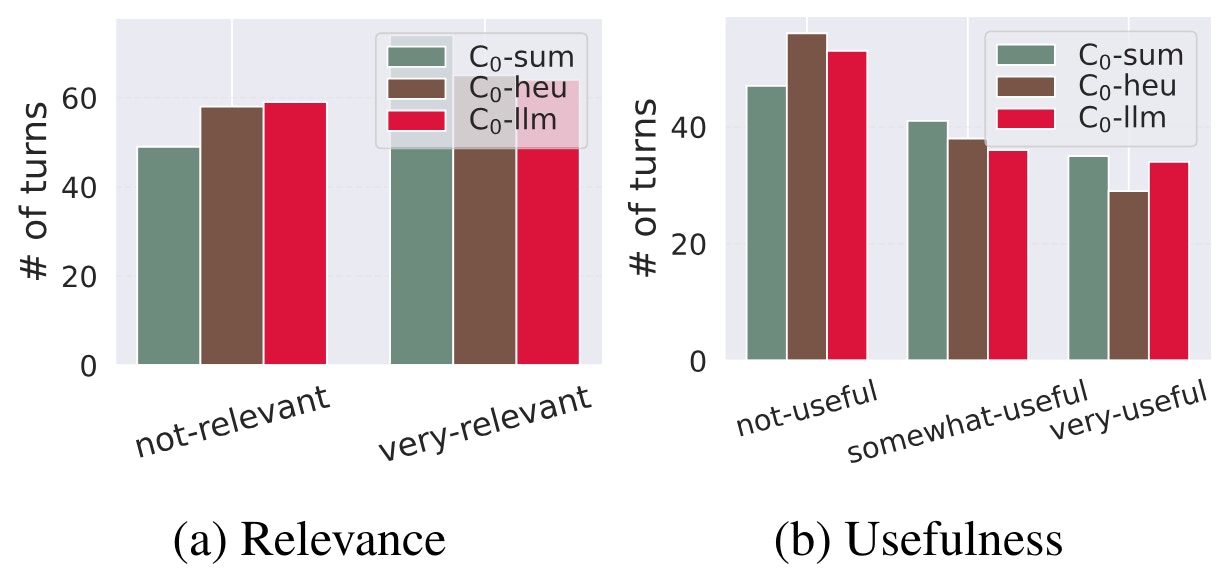Need a social media policy? This guide walks you through crafting one from scratch, with a customizable template to keep your brand protected.
Social media can be awesome for your brand—or a total disaster.
One minute, your team posts something funny, and people love it. The next, someone says something that gets taken the wrong way, and now you’re in full social media crisis management. That’s why having a social media policy in place is so important.
A good social media policy helps everyone on your team understand the rules—what’s okay to post, what’s not, and what to do if something goes wrong.
Don’t have one yet? Stick around! We’ll walk you through how to build an effective social media policy and even share a simple template you can customize for your organization.
But first—what exactly is a social media policy, and why does it matter?
What Is a Social Media Policy?
A social media policy is a set of rules that helps your team know how to post and interact online in a way that protects your brand.
It covers everything from what to post on the company’s social media accounts to how employees should talk about your business on their personal profiles. A good social media policy also explains how to handle things like customer comments, negative feedback, or even social media emergencies.
Why is this important? Social media moves fast. One small mistake—like a misunderstood post or a leaked private conversation—can go viral in seconds. Having social media protocols in place helps your team avoid costly missteps by giving them a clear roadmap for posting, responding, and engaging online.
📖 Related Read: 5 Failed Social Media Campaigns (What Not To Do)
Who Needs a Social Media Policy?
A social media policy is a useful thing to have for any business.
For most companies, it helps keep social media communication consistent and avoids mistakes. But for certain organizations, like government agencies, insurance companies, and medical service providers, these policies are non-negotiable. Why? Because they need to follow strict laws to protect private data, avoid misinformation, and stay compliant with regulations.
Of course, not every business needs an overly complex social media policy.
For example, government agencies typically require more comprehensive guidelines. The U.S. Department of Commerce policy, for instance, spans multiple chapters of detailed rules. However, that level of detail would be a bit of overkill for a small business.
Is It Compulsory to Have a Social Media Policy?
The short answer is no, it’s not. But it’s a good idea to have one nonetheless!
Depending on your business you might need to cover your bases, especially if your organization handles sensitive information or operates in a regulated industry.
Here are examples of regulations in different countries that you must abide by, which may require you to implement a social media policy:
| Country | Regulation | What it covers |
| U.S. | HIPAA (Health) and FINRA (Finance) | Protects private health information and regulates financial communication. |
| Canada | PIPEDA | Ensures businesses handle personal data safely and transparently. |
| European Union | GDPR | Governs how companies collect, store, and use customer data. |
| Australia | Privacy Act | Controls how businesses use and share personal information. |
| UAE | PDPL (Personal Data Protection Law) | Regulates data collection and online privacy for businesses. |
| Singapore | PDPA (Personal Data Protection Act) | Protects personal data and requires businesses to manage it responsibly. |
Key Components of a Social Media Policy
Now that we’ve covered what a social media policy is and why it matters, it’s time to look at the key elements it should include.
Purpose of the Policy
Start by explaining why your organization needs a social media policy. This could be to avoid misinformation, protect customer data, or keep communications consistent. When people understand the “why,” they’re more likely to follow the rules.
Who It Applies To
Make it clear that the policy applies to anyone who represents the company online—whether they’re full-time employees, interns, or freelancers working on your social media accounts.
Roles and Responsibilities
Define who does what. Who approves posts? Who responds to negative comments? Who handles social media during a crisis? Having roles spelled out helps avoid confusion.
Official Account Guidelines
Establish clear rules for posting, including the tone and style your brand should use. For example, should posts be friendly or formal? Are emojis and hashtags allowed? Make sure to also include instructions for handling mistakes, such as when to delete and repost or when to issue a correction.
If you already have these details in your social media kit, you can either copy the relevant sections into your policy or provide a link to the original document for easy reference.
Personal Account Guidelines
Many employees post about their work on personal accounts, especially on LinkedIn. Explain what’s okay and what’s not. For example, they might need to include a disclaimer like, “Opinions are my own,” and avoid sharing sensitive company information.
Security Best Practices
Another important part of your policy is advice for protecting your company’s social media accounts. As you probably know, these accounts are prime targets for hackers. That’s why your policy should include tips for creating strong passwords, using two-factor authentication, and spotting phishing scams. It’s also helpful to explain what employees should do if they notice any suspicious activity.
Legal and Privacy Rules
Make sure your policy covers privacy laws and copyright rules. For example, employees shouldn’t post customer data or use copyrighted images without permission. If your industry is regulated, like healthcare or finance, make those rules crystal clear.
Crisis Management Plan
Mistakes and misunderstandings happen. Your policy should include a step-by-step plan for handling negative comments, viral criticism, or other PR issues. Be clear about who’s in charge and how to respond quickly and professionally.
Consequences for Breaking the Rules
Finally, your policy should explain what happens if employees don’t follow the rules. Will they receive a warning? Will they need to undergo additional training? Or could there be more serious consequences? Putting this in writing helps everyone understand the stakes.
Creating a Social Media Policy Template
Creating a social media policy from scratch can feel like a lot, but using a template makes the process much simpler. Grab our easy-to-use template and tailor it to fit your business needs.
The [bracketed sections] highlight areas you can customize based on your organization’s specific needs.
| [Company Name] Social Media Policy
This social media policy outlines the guidelines for how employees, contractors, and representatives of [Company Name] should behave online. The purpose is to protect our brand, ensure compliance with regulations, and encourage responsible online engagement. This policy applies to all employees, contractors, interns, and third-party collaborators who manage or contribute to our social media accounts. It also applies to employees posting about [Company Name] on personal social media profiles. Roles and Responsibilities: The Social Media Manager oversees official accounts, approves posts, and monitors engagement. The Customer Support Team responds to customer questions and escalates issues when necessary. The Crisis Response Team handles PR crises and negative feedback. [Add or remove roles as needed.] Personal Account Guidelines: We respect employees’ rights to post on personal accounts. However, when mentioning [Company Name], avoid sharing sensitive information. Use a disclaimer like “Opinions are my own” if your post could be linked to company activity. Be respectful and avoid engaging in online arguments about [Company Name] or competitors. Security Guidelines: Use strong passwords and enable two-factor authentication on all social media accounts. Avoid clicking suspicious links or downloading unverified attachments. Report any signs of hacking or phishing attempts immediately to [Security Contact Name/Department]. Legal Compliance: Follow privacy laws (e.g., GDPR) when posting content. Don’t use copyrighted materials without permission or proper credit. Avoid sharing customer or client information unless explicitly authorized. Crisis Management Plan: In case of negative feedback or a crisis, notify [Crisis Contact] immediately. Acknowledge customer concerns within [X hours] and follow pre-approved messaging. Stay calm, avoid emotional responses, and do not delete negative comments unless they break community guidelines. Disciplinary Actions: Failure to follow this policy may result in [warnings, extra training, suspension, or termination] based on the severity of the violation.This policy will be reviewed [annually/quarterly] and updated as needed. Employees will be notified of major changes. By signing below, you acknowledge that you have read, understood, and agree to follow [Company Name’s] social media policy. Employee’s full name: ____________________ |
Examples of Social Media Policies
Looking at how other organizations structure their social media policies can be a helpful starting point. Many well-known companies make their policies public to showcase transparency and build trust.
For example:
- Dell: Their social media policy emphasizes responsible, respectful conduct and transparency to protect the brand.
- Target Australia: Their social media policy uniquely emphasizes balancing personal expression with the responsibility to uphold confidentiality, protect brand integrity, and avoid unauthorized representation.
- Massachusetts General Hospital Social Media Guidelines for Employees: The policy emphasizes separating personal from professional views, protecting patient privacy, adhering to institutional policies, and maintaining transparency, professionalism, and accuracy when referencing the hospital or engaging in official communications.
Tips for Implementing and Enforcing Your Social Media Policy
Creating a policy is only the first step—here’s how to make sure it works:
- Make it easy to access: Share the policy during onboarding and team meetings, and store it where everyone can find it.
- Provide clear examples: Show examples of good posts and common mistakes during training.
- Have an approval workflow in place: If your line of business and the content you post requires approval by the compliance department, it’s a good idea to have an approval system. Instead of tracking feedback manually, tools like Gain automate the entire approval process—sending reminders, organizing revisions, and making approvals as simple as a single click.
- Change it: Regulations change, and the social media landscape shifts. Don’t sleep on your policy—update it promptly to keep it relevant.
Final Thoughts
A social media policy provides structure and safeguards, but it can also make your team’s work easier and faster. They no longer need to send someone an email to ask, ‘Is it okay to post this on our company’s LinkedIn page?’
If you’re looking for a tool to simplify the way you manage your company’s social media accounts, consider Gain. As mentioned earlier, its superpower is customizable approval workflows that save time, reduce errors, and help you create great content that’s both on-brand and compliant with regulations.
Try Gain for free today—no credit card required.


/cdn.vox-cdn.com/uploads/chorus_asset/file/25822628/PXL_20250108_162058411.jpg)








